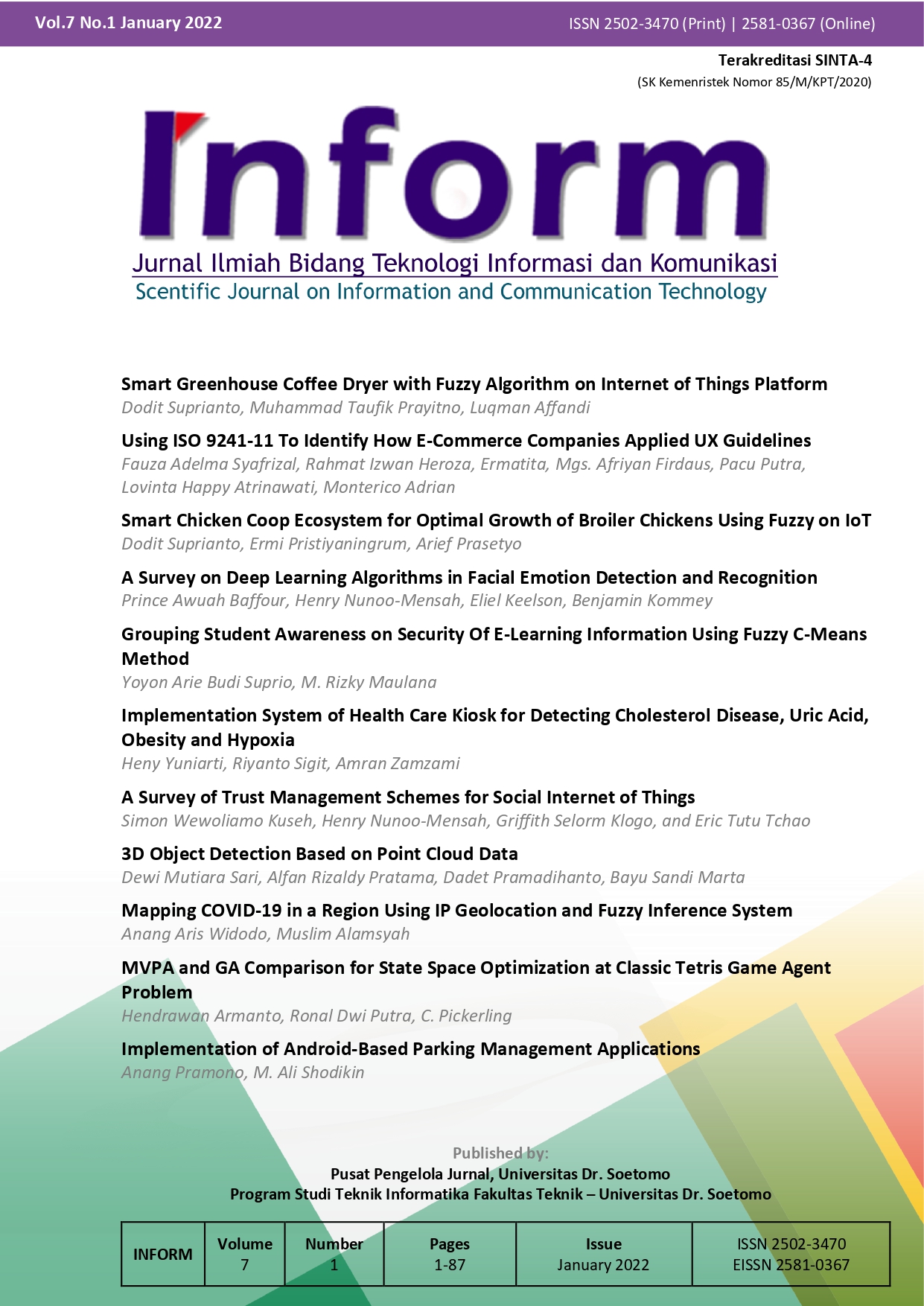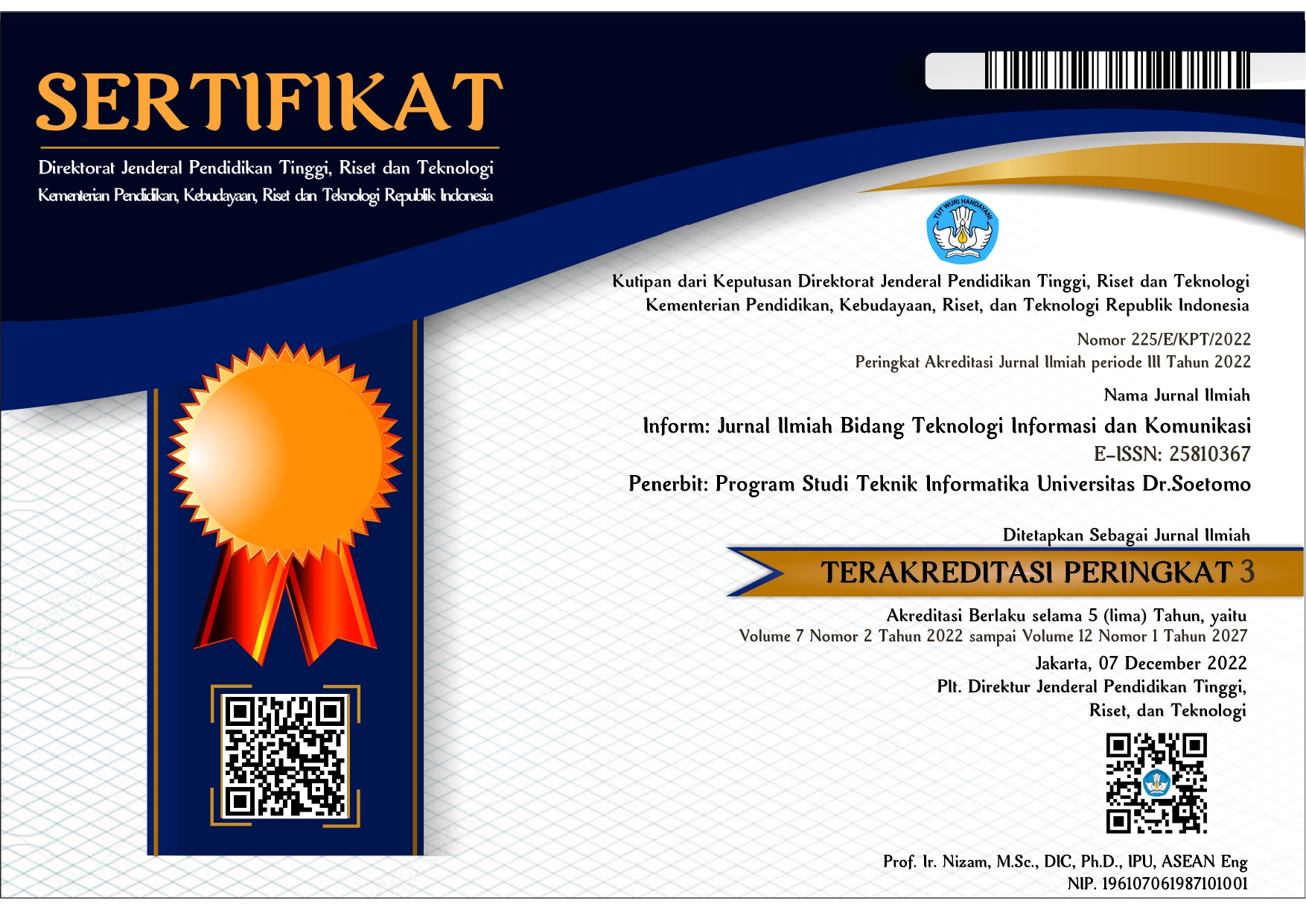Implementation System of Health Care Kiosk for Detecting Cholesterol Disease, Uric Acid, Obesity and Hypoxia
 Abstract views: 210
,
Abstract views: 210
,
 PDF downloads: 286
PDF downloads: 286
Abstract
The development of technological advances in the health sector in the last decades has grown very rapidly. Currently, most people do not receive routine medical check-ups because of the long lines of patients and the expensive rates they must pay to see a specialist doctor. This causes many people to ignore the importance of routine health checks as recommended by the National Health Agency. The purpose of this research is to make a device that can perform routine checks independently at home, using an Arduino microcontroller for checking cholesterol, uric acid, obesity, and hypoxia. This tool has several sensors, namely Ultrasonic & Load Cell sensors to measure weight and height, which are used to detect obesity through the BMI table. In addition, there is a Pulse and Oxygen in Blood Sensor (SPO2) sensor to detect heart rate and oxygen saturation to detect hypoxia using the fuzzy logic method. Cholesterol and uric acid examination using the Electrode Based biosensor method with a digital detection device (amperometric biosensor). Testing the Tsukamoto fuzzy logic method system obtained a data accuracy value of 100%, following the rules set for classifying hypoxic diseases. The trial phase was carried out as many as 10 trials, where 90% of patients did not experience hypoxia, and 10% had mild hypoxia. The results of testing the BMI table method system for obesity obtained a data accuracy value of 100% according to the calculation of the BMI calculator. In phase 10 trials, 30% of patients were lean, 50% obese, and 20% obese. The system test results use a range of values, each with a data accuracy value of 100% according to the classification of cholesterol and uric acid levels. Ten trials showed that 70% of patients were in normal condition, 20% of patients with low cholesterol, and 10% of patients were in high limits. As for gout, 70% of patients are in normal condition, and 30% of patients are in high uric acid condition.
References
WHO, 2016.
Emilia, Juana and Ganda "Early Detection of PTM, Examination of Blood Sugar, Cholesterol and Uric Acid", Medan Health Polytechnic 2020.
David Suwandi, Christine Sugiarto, Fenny "Comparison of Total Cholesterol Level Examination Results with Electrode-Based Biosensor Methods with Spectrophotometric Methods".
Veriko Yonanto, I Dewa Gede Hari Wisana, Triana Rahmawati "SPO2 Monitoring Through Android Applications on Mobile Phones", Health Poltekkes Ministry of Health, Surabaya 2019.
Sabili Ridho "Measurement of Height and Weight for Arduino-Based Ideal Human Weight Information", State University of Jakarta 2016
Dirman Nurlette and Toni Kusuma Wijaya "Design of an Arduino-Based Ideal Height and Weight Measuring Instrument", University of Riau Islands Batam 2018.
Nanda Novita "The Fuzzy Tsukamoto Method for Determining Scholarships", University of North Sumatra 2016.
Agus Supriyanto "Design of Uric Acid Telemedicine (GOUT) Based on the Internet of Things (IOT)", University of Semarang 2019.
I Ketut Resika Arthana, I Made Ardwi Pradnyana, Desak Putu Yuli Kurniati “Heart Rate Monitoring System and Patient Location”, 2018 .
Ria Hariri, Lutfi Hakim, Riska Fita Lestari" Heart Rate Monitoring System Using AD8232 Sensor Based on Internet of Things", 2019.
Tyle Yan H.H Lukar, Florentinus Budi Setiawan "Detection of Human Muscle Signals on Android Using an Arduino UNO Microcontroller-Based Electromyography Sensor", 2018.
Theo Wiranadi Hendrata, Achmad Arifin, dan Nada Fitrieyatul Hikmah “Android Application Based Electrocardiography Monitoring System”, Institut Teknologi Sepuluh Nopember (ITS) 2016.
Dian Bagus Setyo Budi, Rizal Maulana, Hurriyatul Fitriyah "Hypoxia Symptom Detection System Based on Oxygen Saturation and Heart Rate Using Arduino-Based Fuzzy Method ", Universitas Brawijaya 2019.
Fahrurrozi, Erika Loniza,Desy Rahmasari, “Medical Healthy Detection (Parameters of Height and Weight)”, Universitas Muhammadiyah Yogyakarta.
ISRIYADI TASLIM "Differences in Total Cholesterol Level Examination Results Between Electrode-Based Biosensor Method Using Wholeblood and Serum Samples with Enzymatic End Point Method", UNIVERSITAS SETIA BUDI SURAKARTA 2017.
Copyright (c) 2022 Heny Yuniarti, Riyanto Sigit, Amran Zamzami

This work is licensed under a Creative Commons Attribution-ShareAlike 4.0 International License.
Authors who publish with Inform: Jurnal Ilmiah Bidang Teknologi Informasi dan Komunikasi agree to the following terms:
-
Authors retain copyright and grant the journal right of first publication with the work simultaneously licensed under a Creative Commons Attribution License (CC BY-SA 4.0) that allows others to share the work with an acknowledgment of the work's authorship and initial publication in this journal.
-
Authors are able to enter into separate, additional contractual arrangements for the non-exclusive distribution of the journal's published version of the work (e.g., post it to an institutional repository or publish it in a book), with an acknowledgment of its initial publication in this journal.
-
Authors are permitted and encouraged to post their work online (e.g., in institutional repositories or on their website) prior to and during the submission process, as it can lead to productive exchanges, as well as earlier and greater citation of published work.













